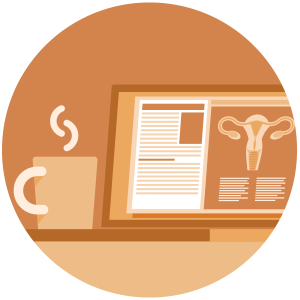Join Sarah Diemert, MSN, BSN, WHNP-BC, in this short, informal Drop-In Active Learning Session webinar. The session will focus on the differences between the various cervical cancer screening guidelines used in the U.S. and how to effectively use the ASCCP app for managing patients with abnormal cervical cancer screening results and cervical abnormalities.
Cervical cancer, predominantly caused by HPV, has seen a significant decrease due to successful public health measures such as pap smear screenings. As a result, the screening guidelines in the U.S. have become progressively less aggressive.
The most widely followed guidelines in the U.S. are those published by the American Society for Colposcopy and Cervical Pathology (ASCCP). However, other organizations such as the American College of Obstetrics and Gynecologists (ACOG), the American Cancer Society (ACS), and the United States Preventive Services Task Force (USPSTF) also publish their own guidelines. This session aims to clarify these differences and provide clear guidance for clinicians.
Learning Objectives
1. Explain the difference between the American Cancer Society (ACS) and United States Preventive Services Task Force (USPSTF) cervical cancer screening guidelines.
2. Utilize the ASCCP app to determine appropriate management for patients with abnormal cervical cancer screening results and cervical abnormalities.

Join Sarah Diemert, MSN, BSN, WHNP-BC, in this short, informal Drop-In Active Learning Session webinar. The session will focus on the differences between the various cervical cancer screening guidelines used in the U.S. and how to effectively use the ASCCP app for managing patients with abnormal cervical cancer screening results and cervical abnormalities.
Cervical cancer, predominantly caused by HPV, has seen a significant decrease due to successful public health measures such as pap smear screenings. As a result, the screening guidelines in the U.S. have become progressively less aggressive.
The most widely followed guidelines in the U.S. are those published by the American Society for Colposcopy and Cervical Pathology (ASCCP). However, other organizations such as the American College of Obstetrics and Gynecologists (ACOG), the American Cancer Society (ACS), and the United States Preventive Services Task Force (USPSTF) also publish their own guidelines. This session aims to clarify these differences and provide clear guidance for clinicians.
Learning Objectives
1. Explain the difference between the American Cancer Society (ACS) and United States Preventive Services Task Force (USPSTF) cervical cancer screening guidelines.
2. Utilize the ASCCP app to determine appropriate management for patients with abnormal cervical cancer screening results and cervical abnormalities.

